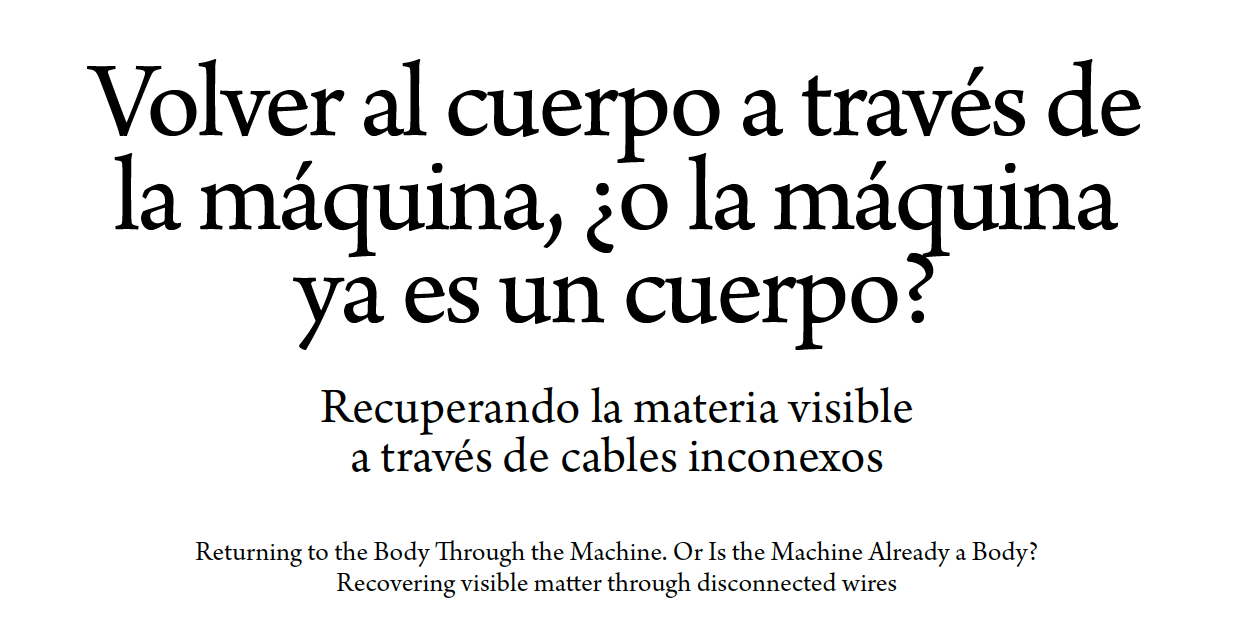Returning to the Body Through the Machine. Or Is the Machine Already a Body? Recovering visible matter through disconnected wires.
DOI:
https://doi.org/10.46516/inmaterial.v10.246Keywords:
3D printer, intra-action, digital acceleration, memory, technological philosophyAbstract
In a context marked by digital acceleration and the dematerialization of culture, this article explores the 3D printer as a philosophical and creative artifact that challenges the dichotomies between the virtual and the physical, as well as between craft and mass production. It is argued that the 3D printer is not merely a manufacturing tool, but an active agent in the co-creation of new material forms. This device, through its slow and meticulous process, confronts the logic of information and the consumer economy, emphasizing the value of time. This Machine of Individual Creation (MIC) becomes a symbol of resistance.
In an era of hyperconnectivity, the act of printing a "thing" takes on a subversive meaning; it invites a reconnection with the body and a conscious curation of memory in the digital age. The exploration of the MIC as a contemporary weaving machine proposes an intimate fusion of speculative science, design, and new materialities that aim to soften our technological environments and open the way to new forms of inhabiting our ecosystem.
Downloads
References
Barad, K. (2012). What Is the Measure of Nothingness? Infinity, Virtuality, Justice, en 100 Notes – 100 Thoughts (pp. 1-20). Hatje Cantz Verlag. https://infrasonica.org/es/wave-1/what-is-the-measure-of-nothingness
Bennett, J. (2010). Vibrant matter: A political ecology of things. Duke University Press.
Davis, E. (2015). TechGnosis: Myth, magic, and mysticism in the age of information. North Atlantic Books.
Esposito, R. (2020). Personas, cosas, cuerpos. Ediciones Akal.
Han, B.-C. (2021). No-cosas: Quiebras del mundo de hoy. Taurus.
Hertz, G. y Parikka, J. (2012). Zombie Media: Circuit Bending Media Archaeology into an Art Method en W. Huhtamo y J. Parikka (Eds.), Media Archaeology: Approaches, Applications, and Implications (pp. 424–441). University of California Press
Kafka, F. (s. f.). Las preocupaciones de un padre de familia.
Mack, A. (2018, 22 de noviembre). Odradek: The form which things assume in oblivion. Frieze. https://www.frieze.com/article/odradek-form-which-things-assume-oblivion-2018-review
Plant, S. (1997). Zeros + Ones: Digital Women and the New Technoculture. Fourth Estate.
Rosa, H. (2019). Resonancia: Una sociología de la relación con el mundo. Katz Editores.
Tripaldi, L. (2023). Mentes paralelas. Caja Negra.
Tripaldi, L. (2024). Brains in a dish: Are the future of soft futures?
https://softfutures.substack.com/p/brains-in-a-dish-are-the-future-of
Zafra, R. (2010). Un cuarto propio conectado. Feminismo y creación desde la esfera público-privada online. Universidad de Sevilla. https://www.remedioszafra.net/text_rzafra10.pdf
Zafra, R. (2018). Remedios Zafra: espacio privado, relaciones online, identidad y deseo en Internet [Vídeo]. CCCB. https://www.youtube.com/watch?v=EUgZFn0r6mo

Published
How to Cite
Issue
Section
License
Copyright (c) 2025 Laura Subirats Gonzalez

This work is licensed under a Creative Commons Attribution-ShareAlike 4.0 International License.






